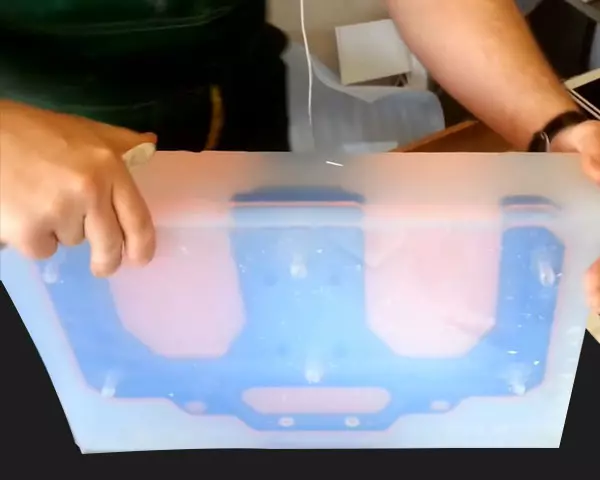1. Description
This series of addition-cure clear liquid silicone is a high-hardness and high-strength elastomeric material. It is a platinum-catalyzed RTV-2 silicone rubber, consisting of Part A, which is a viscous base, and Part B, which is a water-like platinum curing agent. When mixed in a weight ratio of 10A:1B, this compound can cure faster at room temperature or at slightly elevated temperatures.
The transparent property of the cured silicone rubber makes it an excellent choice for molds that require cutting after curing. Since the model is visible, it is easier to determine the parting line. This is also very useful when casting complex parts, as it ensures that the entire mold cavity is filled with casting material.
2. Feature
- High hardness, high strength, high transparency.
- Clear appearance allows split lines to be cut accurately in block molds.
- Very low shrinkage for extremely accurate molds.
- Can be used for high-temperature (250°C/482°F) casting applications.
- Outstanding release properties.
- Produces extremely fine detail from original.
3. Application
This series of high-hardness clear silicone rubber materials exhibit excellent tear and tensile strength while maintaining a low shrinkage rate. They are suitable for applications that require very precise replication of the original part size, making them ideal for mold-making in jewelry and other similar products. Additionally, these materials have excellent release properties and exhibit outstanding molding durability when used with epoxy and polyurethane resins.
This series of silicone rubber is also recommended for rapid prototyping applications, such as TV sets, household appliances, mobile phones, photocopiers, console boxes, radiator grilles, and lampshades.

Rapid Prototyping

Lost Wax Process
Epoxy Resin Mold
Diamond Clear Mold
4. Attention
- It is important to use Part A and Part B of the same model and lot number. If different lots are used, suitability should be determined by testing.
- For optimal results, it is recommended to mix and cure the material at a temperature of 25°C (77°F) and with 50% relative humidity. It is important to avoid using addition cure silicone rubber in humid conditions, as this can lead to faulty curing.
- It is not recommended to cure the material at temperatures below 20°C (68°F). Lower temperatures have been found to result in reduced final cure hardness and may affect the overall properties of the material.
- Curing the material at room temperature ensures the lowest possible shrinkage. The use of higher temperatures may result in excessive shrinkage occurring.
- It is essential to tightly seal the containers of the platinum catalyst after use. If the catalyst is exposed to air for an extended period, it will undergo hydrolysis. One visible sign of hydrolysis is the formation of a film or crust on the surface of the catalyst. It is not advisable to use hydrolyzed catalyst as it may result in incomplete curing.
- The clear liquid silicone belongs to the platinum-cured silicone rubber group and may inhibit cross-linking when it comes into contact with certain materials. If there is uncertainty about the compatibility between the silicone and the surface material, it is recommended to conduct small-scale testing. Smoking should be avoided during the operation process.
5. Safety
- Under normal storage and handling conditions, these products are stable in airtight containers at room temperature and will not undergo any hazardous reactions.
- Please keep out of reach of children.
- First Aid Measures:
- Skin Contact: Wash the affected skin thoroughly with soap and water. Seek medical attention if symptoms persist after washing.
- Eye Contact: In the event of contact with the eyes, rinse them thoroughly with clean water for at least 15 minutes. Seek medical attention if irritation persists after rinsing.
- Inhalation: Under normal conditions of intended use, this material is not expected to be an inhalation hazard.
- Ingestion: Do not induce vomiting unless instructed by a physician. Rinse mouth thoroughly. Seek medical attention if symptoms occur.
Please note that these measures are general guidelines. In case of an emergency, always consult a medical professional or seek immediate medical attention.
6. Storage
The material should be stored at room temperature (15 to 25°C / 60 to 77°F) and has a shelf life of 12 months from the date of production. Storing the material at higher temperatures can shorten the shelf life of unused materials. As storage time increases, the viscosity of the liquid silicone may also increase. However, exceeding the specified date on the analysis certificate does not necessarily mean that the product is no longer usable. In this case, it is necessary to check the properties required for the intended use for quality assurance reasons.
Containers that have been opened must be carefully resealed to prevent leakage. Store in a cool, dry place with adequate ventilation. Keep away from incompatible materials (bases and acids), open flames, and high temperatures.